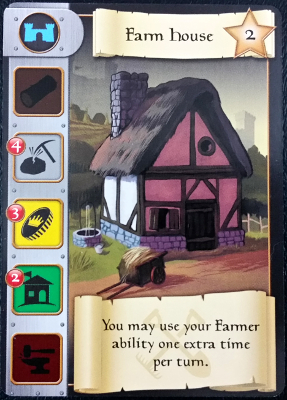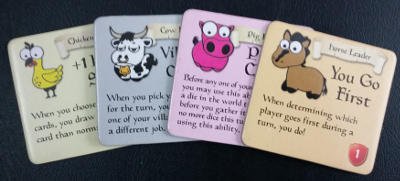Note: This review pertains to an expansion for Castle Dice and requires the base game to play. We are also assuming that you are familiar with the base game, or at least have read its review.
When asked to imagine a castle, chances are good that just about everyone’s vision will have the same basic features: high stone walls, imposing towers and parapets, a gate leading into an open courtyard. Maybe a moat or pit. Add flags for some color. But…how big is this conjured castle? Who lives there? Where is it located? When was it built? Yes, once you get the foundations out of the way, concepts start diverging pretty quickly. That’s mostly because imaginary castles, just like real ones, come in all shapes and sizes. Well, except in this kingdom.
That is, until now.
The Premise
Either as a result of new ruling families arriving to the Castle Dice kingdom (or looking for a way to better represent the ruling clans already here), the decree has gone out for a better showing of diversity within the land’s borders. Through the introduction of individually-tailored decks, this expansion gives players access to unique and previously unforeseen specializations thanks to their castle’s denizens.
Rules Creep Factor
As a small expansion to Castle Dice, the rules impact of More Castles is minor, with only one actual change. In this expansion, the central Castle Deck is no longer used. Instead, during setup each player receives their own Castle Deck to use throughout the game. More Castles comes with four unique Castle Decks, each providing a different thematic focus and power specialization. Players may either choose which deck to use or may assign them randomly.
At the beginning of each round, players discard and draw cards as normal back up to five from their own Castle Deck and / or from the shared Village Deck.
Beyond this, More Castles also includes rules for playing 2v2 team games.
The Rundown
In Castle Dice, the two primary card decks are the means of turning your resources into desirable assets. Cards from the Village deck typically focus on bolstering your castle’s economy by providing extra resources or letting you purchase bonus-granting villagers such as farmers or guards. By contrast, the Castle deck is almost entirely comprised of castle cards that award VP when completed. Aside from a handful of cards to temporarily raise your resource-gathering powers, its sole purpose is giving you things to build – which is helpful since building is a large portion of how you win.
The caveat to the standard Castle deck, however, is that the castle cards within it are rather vanilla flavored, with generic walls and structures that either provide an ability that is effectively random due to luck of the draw or have no abilities at all. It’s a holistic deck with a decent spectrum of game effects which serve as helpful guideposts for new players and allows for different tactics each playthrough. That being said, this wide variety approach also makes it difficult for consistent or cohesive strategies.
More Castles remedies that with the introduction of four decks, each partially tailored around one of the game’s four villager types: Worker, Farmer, Merchant, and Guard. All four have markedly different techniques in how they go about creating VP, and yet every one is surprisingly balanced, with no faction inherently more powerful than another.
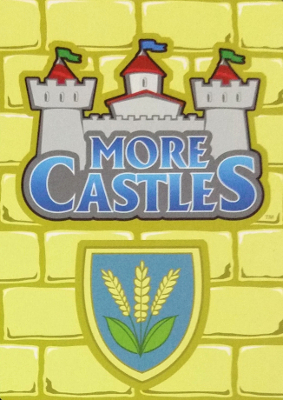 The Farmer deck is all about the animals. This deck turns collecting animals from simply a means of getting leader bonuses or extra Market cards into a full-fledged resource engine. It has numerous ways of gaining critters and / or converting those copious barnyard friends into resources and VP. With this deck, stockpiling animals isn’t just an amusing antic – it’s a lucrative endeavor.
The Farmer deck is all about the animals. This deck turns collecting animals from simply a means of getting leader bonuses or extra Market cards into a full-fledged resource engine. It has numerous ways of gaining critters and / or converting those copious barnyard friends into resources and VP. With this deck, stockpiling animals isn’t just an amusing antic – it’s a lucrative endeavor.
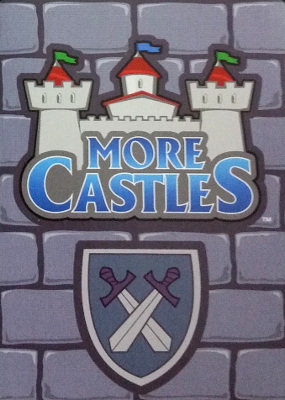 The Guard deck provides perks by throwing its military weight around on two levels, though they synergize well with one another. First, the deck has several cards that reward you for investing in Guards, turning what is normally a mere protection against barbarian dice into a means of garnering resources from them. Second, this set of cards leverages barbarians themselves as a resource in different ways, such as re-rolling them for gathering, using them as cost reductions, and in the painful case of the Poet card, forcing everyone to double their barbarian allotment that round.
The Guard deck provides perks by throwing its military weight around on two levels, though they synergize well with one another. First, the deck has several cards that reward you for investing in Guards, turning what is normally a mere protection against barbarian dice into a means of garnering resources from them. Second, this set of cards leverages barbarians themselves as a resource in different ways, such as re-rolling them for gathering, using them as cost reductions, and in the painful case of the Poet card, forcing everyone to double their barbarian allotment that round.
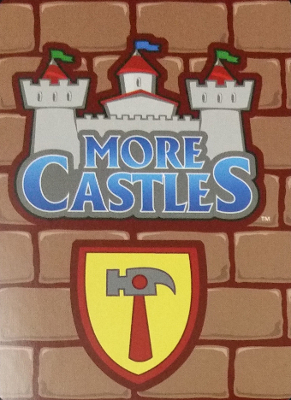 The Worker deck is all about building as many castle cards as possible by way of gathering ample resources. This is done both through its focus on creating Workers as well as flooding the dice pool with extra and high-valued dice. Once you have enough Workers on hand, this deck quickly becomes more likely to craft cards each round than discard them.
The Worker deck is all about building as many castle cards as possible by way of gathering ample resources. This is done both through its focus on creating Workers as well as flooding the dice pool with extra and high-valued dice. Once you have enough Workers on hand, this deck quickly becomes more likely to craft cards each round than discard them.
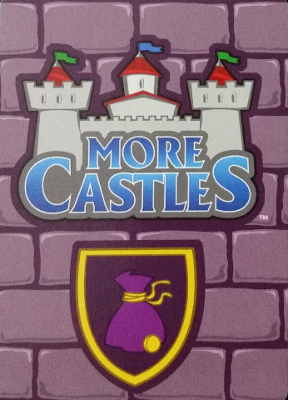 Finally is the Merchant deck. Much like normal Merchants exchanging one good for another, this deck revolves around manipulating available resources. Cards in this deck can affect various dice already in the world pool, and in the case of the Astronomer card, can even alter which dice players get to roll that round. Alongside this, the merchant deck also focuses on drawing extra cards to prolong their influence. When paired together, this deck focuses squarely on having options and engineering the situation into their favor more than anything else.
Finally is the Merchant deck. Much like normal Merchants exchanging one good for another, this deck revolves around manipulating available resources. Cards in this deck can affect various dice already in the world pool, and in the case of the Astronomer card, can even alter which dice players get to roll that round. Alongside this, the merchant deck also focuses on drawing extra cards to prolong their influence. When paired together, this deck focuses squarely on having options and engineering the situation into their favor more than anything else.
Collectively, the use of these decks deepens Castle Dice’s value without deviating from what already works. This is reflected by the fact that while each deck unequivocally rewards you for playing to its strengths, none go so far as to force a specific style of play, nor does any completely negate the usefulness of the Village deck. The only tradeoff in shifting from a communal to individual decks is that Castle cards become more focused but also less frequently seen, which results in Castle card effects being just as random as the base deck unless you invest in drawing them more rigorously than you may have otherwise.
Prettying Up The Courtyard
Beyond the decks, More Castles also adds some ancillary components to the base game. The first of these are new tracking tokens for player boards, replacing the game’s glass beads. One small but common criticism of Castle Dice is that the beads are oversized for their spaces and can bump into and crowd one another when monitoring resources, making them somewhat cumbersome at times. The new cardboard pieces of this expansion alleviate that problem. While they aren’t nearly as hefty as the beads, each of these small tokens fit comfortably within their resources track. They also match both the color and iconography of their row, which makes resource counting easier too.
Secondly, More Castles introduces a set of Animal Lead markers, which players can put in front of them whenever they have the most of that particular animal. These markers intend to make it easier to see who currently has each of the animal bonuses at any given time rather than continually counting each other’s boards, though their usefulness depends on player size. They are particularly handy in four player games when there is much more information to keep tabs on, but with fewer players they tend to be unnecessary.
In either case, the inclusion of these small but optional pieces make for a decent set of extras to Castle Dice and help smooth out some of the game’s minor bookkeeping.
The Takeaway
It doesn’t take a royal proclamation to state that More Castles is a fine addition to the Castle Dice kingdom. The inclusion of the expansion’s four new decks allows Castle Dice to move incrementally into more complex gameplay while retaining all of the dice-drafting, animal-corralling, and barbarian-lamenting moments that makes the game so endearing. While they may not be ideal for new players due to their diverse tactics and inferred understanding of how the different villagers function, for those familiar with Castle Dice the new decks will likely replace the original shared deck in all subsequent playthroughs. More Castles doesn’t drastically change what already works. Instead it makes for a worthwhile expansion that enhances rather than hampers the casual-friendly Castle Dice experience. Indeed, the only actual mark against it is, ironically, fitting the cards into Castle Dice’s oversized box.
Castle Dice: More Castles! is a product of Fun to 11 Games.
Cardboard Republic Snapshot Scoring (Based on scale of 5):
Artwork: 4.5
Rules Clarity: 5
Replay Value: 4.5
Physical Quality: 4
Overall Score: 4.5

